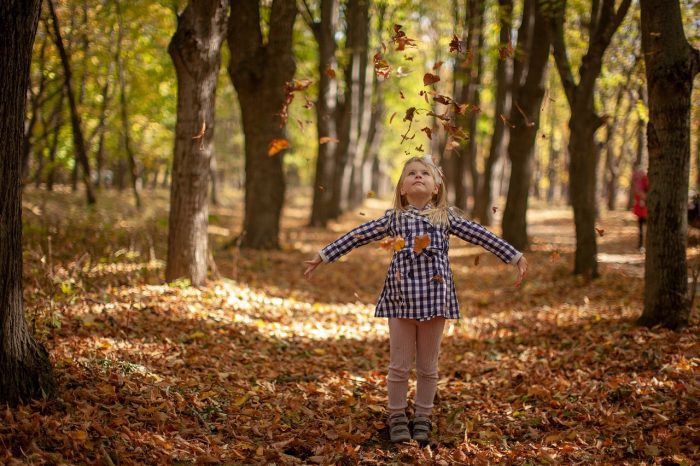By John L. Turner
“Forests full of fallen leaves are a gift trees give to themselves.” — Jim Finley

Often it is the commonplace things we overlook. We pay little to no mind to trees adorned with the green leaves of summer. But come autumn, leaves with their riotous colors suddenly command our attention, so much so that we sometimes drive long distances to view this annual gift. And, of course, they also command the attention of homeowners once they fall to earth as it’s time for the annual task of raking leaves.
What causes the change in leaf color? Trees are finely attuned to environmental conditions and as summer melds into autumn, the changes in temperature and daylight length are slight — hardly, if at all, noticeable to us. But not so with the trees of Long Island’s forests. They are attuned to incremental changes in environmental conditions and the leaf color change is evidence trees have begun to prepare for the impending winter although it is still several months away.
During the summer leaves are filled with chlorophyll, a vital pigment necessary for plants to photosynthesize. Remarkably, these chlorophyll pigments use sunlight, water, and carbon dioxide (the stuff we exhale) to produce the sugars they need to maintain and grow plant tissue while emitting life-giving oxygen for us. Leaves are the food factories of trees.
As summer wears on, trees begin to break down chlorophyll pigments, reabsorbing the vital nitrogen that’s part of the chlorophyll molecule, which as a result reveals the presence of other pigments. The color of the leaf depends on which of these pigments appear — anthocyanin produces red colored leaves, xanthophyll creates yellow, and carotene results in orange and gold. As dedicated leaf peepers have learned over the years, a fall season with cool nights and warm sunny days produces the most intense colors.
There are a dozen or so tree species along the North Shore providing the riot of color that a spectacular autumn burst can bring. Two wetland trees are especially colorful, indeed brilliant — red maple and black tupelo. Their leaves turn an intense orange-red, so colorful it appears if they are illuminated from an internal light source. Tupelo starts turning early, beginning in mid-August. Add to this the butter yellow of the hickories, the lemon-yellow of sassafras, the bright red of scarlet oak (easy to understand how it got its name when you see it in autumn splendor), the similarly colored red oak, the solid tan of beech, the duller orange of black oak, and the solid gold of black birch, and it’s clear that Long Island’s forests can paint an eye-pleasing show!
In writing this article I came to wonder how many leaves drift to the ground each autumn from trees growing in North America. Sure enough, there was an answer on the Internet — according to one article there are 203,257,948,035 trees in North America (that’s over 203 billion trees). Further, each tree has about 200,000 leaves (seems very high to me, but let’s go with it). Do the math and this results in 40,651,600,000,000,000 leaves (more than 40 quadrillion leaves or 4.06 to the 16th power) falling to the ground each fall. Get out the rakes folks!
Once you focus on leaves, the intrigue begins concerning the great diversity in size and especially shape. Leaves on Long Island trees basically come in two forms — simple and divided. A simple leaf is a leaf that has a single surface even if that surface has points or lobes. Oak, birch, cherry, dogwood, or maple leaves are examples of simple leaves. Other trees have divided leaves — hickory, locust, and walnut come to mind — in which the single leaf has several to many smaller leaflets. In this case the divided leaf with all the leaflets and not the individual leaflets is what falls from the tree.
The sassafras tree, a common constituent in Long Island’s forests, has the distinction of having three different shaped leaves growing on the same tree. These shapes have been likened to a glove, mitten, and fist although the glove shaped leaf looks to me more like a dinosaur footprint or the glove of an alien’s hand!
And then there’s the question of why deciduous and a few coniferous trees shed their leaves before the onset of winter? Given the freezing cold that brings ice and snow with strong winds, if a tree maintained leaves it would increase the chances it topples over as the leaves act as a collective sail. Similarly, the surface area of the leaves gather snow and ice, burdening the tree and branches, likely causing branches to snap. As importantly, if leaves were retained through the winter the tree would attempt to continue to photosynthesize which requires water but water would often not be available in the frozen soil creating great stress on the tree, enough stress to kill it.
Now you’re thinking that’s fine John but what about all those evergreen tree species like pines and spruces since they retain their leaves throughout the winter. How do they survive since they have to cope with the same conditions that led deciduous trees to shed their leaves? First, many evergreens have needles which, based on their shape, don’t hold snow or ice like the broad leaves of deciduous trees and are better at passing wind through their foliage. Further, they also often have a waxy coating that retards water loss (this waxy coating on pitch pine needles is one reason why the Pine Barrens can have intense wildfires). Because of these adaptations evergreens can retain their needles and grow in colder climates than deciduous trees.
Shed leaves play a key role in driving some ecosystems. For example, leaves falling into vernal pools, small seasonal wetlands, form the base of the pool’s food chain. Many invertebrate species shred or decompose the leaves into microscopic pieces which are then fed upon by other animals and bacteria. These species serve as food for predators such as dragonfly and damselfly nymphs as well as many species of frogs and salamanders. Without leaves the vernal pool system would starve and ultimately collapse.
In Robert Frost’s wonderful poem “Gathering Leaves” he talks about the difficulty and perhaps futileness of raking and bagging them:
Spades take up leaves
No better than spoons,
And bags full of leaves
Are light as balloons.
I make a great noise
Of rustling all day
Like rabbit and deer
Running away.
But the mountains I raise
Elude my embrace,
Flowing over my arms
And into my face.
I may load and unload
Again and again
Till I fill the whole shed,
And what have I then?
Next to nothing for weight,
And since they grew duller
From contact with earth,
Next to nothing for color.
Next to nothing for use,
But a crop is a crop,
And who’s to say where
The harvest shall stop?
His frustration for the annual ritual can, today, be largely avoided by limiting your raking and bagging of leaves by making layers of leaves in your flower and tree beds. Better yet, leave them in place, if at all possible, to help protect all varieties of insects and other animals that benefit from thick leaf cover. As eco-conscious homeowners have embraced: “Leave the leaves!”
A resident of Setauket, author John L. Turner is conservation chair of the Four Harbors Audubon Society, author of “Exploring the Other Island: A Seasonal Nature Guide to Long Island” and president of Alula Birding & Natural History Tours.



 A resident of Setauket, author John L. Turner is conservation chair of the Four Harbors Audubon Society, author of “Exploring the Other Island: A Seasonal Nature Guide to Long Island” and president of Alula Birding & Natural History Tours.
A resident of Setauket, author John L. Turner is conservation chair of the Four Harbors Audubon Society, author of “Exploring the Other Island: A Seasonal Nature Guide to Long Island” and president of Alula Birding & Natural History Tours.



